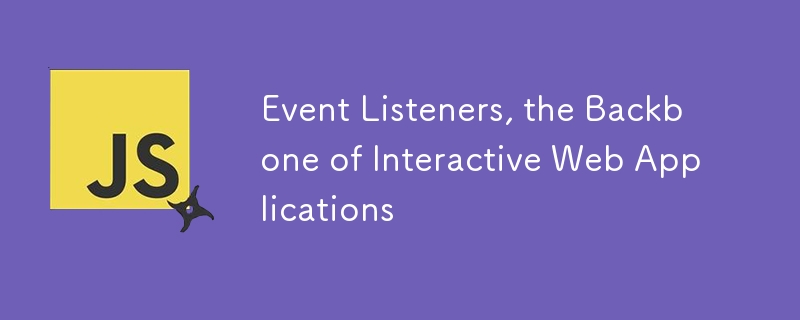

Event listeners are essential components of web applications, enabling them to respond to user interactions and other events. They allow JavaScript code to execute specific functions when certain events occur, such as clicking a button, typing text, or loading a page.
Numerous types of events can be listened to in JavaScript, including:
To add an event listener to an element, you can use the addEventListener method:
element.addEventListener(event, callback);
Where:
Example:
<button>
<pre class="brush:php;toolbar:false">const button = document.getElementById('myButton');
button.addEventListener('click', () => {
console.log('Button clicked!');
});
To remove an event listener, use the removeEventListener method:
button.removeEventListener('click', handleClick);
The above is the detailed content of Event Listeners, the Backbone of Interactive Web Applications. For more information, please follow other related articles on the PHP Chinese website!
 Why do the words after typing in word disappear?
Why do the words after typing in word disappear?
 How to use the month function
How to use the month function
 Usage of setInterval in JS
Usage of setInterval in JS
 Tutorial on making inscribed coins
Tutorial on making inscribed coins
 Cost-effectiveness analysis of learning python, java and c++
Cost-effectiveness analysis of learning python, java and c++
 Introduction to frequency converter maintenance methods
Introduction to frequency converter maintenance methods
 How to use fusioncharts.js
How to use fusioncharts.js
 How many types of usb interfaces are there?
How many types of usb interfaces are there?




